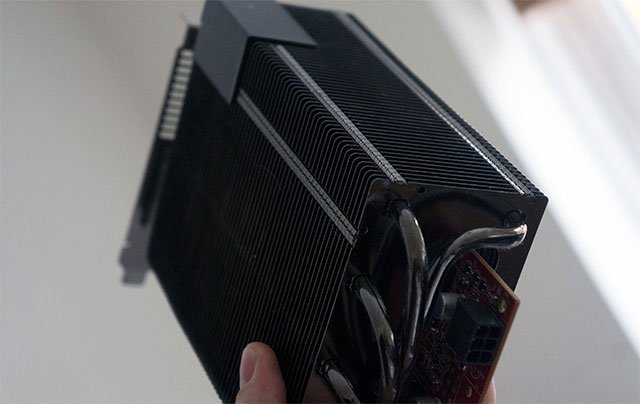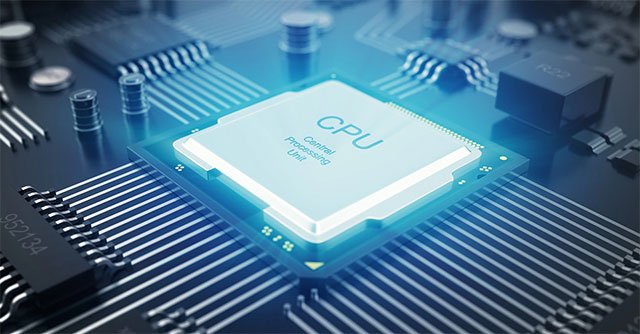Learn about TDP in CPU and why you need to care about it
In the process of upgrading or learning about the hardware components made up of a computer, there must have been many times when you saw the term TDP. So what exactly is TDP and why do you need to care about this value? All will be answered in this article. For now, let's come to the problem soon.
What is TDP?

TDP (thermal design power) is the maximum heat output of a processor chip, present on every CPU or GPU, and is used to measure the amount of heat the processor will emit when loading tasks on the system. system. For example, if the CPU you are using has a TDP of 90W, it indicates that this CPU is expected to generate a maximum thermal value of about 90W when operating. The value of TDP can be confusing for those who do not have much expertise when purchasing new hardware devices. However, you simply need to understand that the higher the number of TDPs, the more power the CPU will consume and the more efficient it needs to be. Therefore, this is an especially important indicator for laptops. For example, the Core i9-8950HK chip with Intel's TDP of 45W is definitely not usable in a light-weight ultrabook, which is only designed for microprocessors with a TDP of about 15W.
- Instructions for using CPU-Z, read the CPU-Z parameters provided
Go back to the original example of a CPU with a TDP of 90W. That doesn't mean that the processor will need 90W of power from the supply, although the actual thermal design capacity is also measured in watts. Instead of raising the required component values as raw input standards, manufacturers use TDP as a nominal value for the related cooling systems. Also, in normal use, it is rarely possible to reach the maximum TDP value, unless you use extremely intensive applications and processes.
In short, the higher the TDP, the more power the processor will consume, while also requiring more cooling, possibly through passive technologies, traditional fan-cooled systems. or liquid heat sink.
TDP and power consumption

TDP is related to the amount of power consumed, but in fact, this parameter is not quite equivalent or can indicate exactly how much power will be consumed by the CPU, but of course you can still use the TDP value as an estimate for the amount of power consumed. For example, Intel's TDP for its chips is a reference power consumption for OEM engineers such as Asus, Dell . to design a suitable thermal solution for the product. In general, low-TDP CPUs consume less power.
Therefore, although the value of TDP may not accurately reflect the level of power consumed by the CPU in a system, it provides a solid basis for designing a suitable cooling system, as well. As a rough idea of how much power (PSU) is needed, it is reasonable. For safety, many experts often recommend using PSUs up to 500W for PC systems with a single GPU.
5 websites compare the speed and CPU performance from the most accurate Benchmark point
summary

Basically, you simply need to understand that TDP is a parameter that helps determine the performance and energy use level of a certain component. Take the example of a computer processor, a CPU model with a higher TDP will often provide powerful performance, but consume more power from the PSU. However, again, TDP is not a direct measure of how much energy a component will consume, but this is an important indicator that helps us identify relevant information.
- Decode the specifications on the laptop
Note that in the process of upgrading computer hardware components such as CPU or GPU, before upgrading to a more powerful CPU or GPU with higher TDP, you must make sure that the current cooling system is sufficient to meet your requirements. bridge to avoid unfortunate incidents during use.
Hope the information in the post useful to you!
You should read it
- Top 5 best heat sinks 2019
- Choose cooling equipment for summer laptops
- You have to use thermal paste properly?
- Green technology
- Liquid heat sink
- YouTuber test uses a Mac Pro heat sink for $ 6000 to make a cheese shaver and an end
- Should we buy laptop heat sink base?
- Make your laptop's heat sinks super simple
May be interested
- 5 life lessons we are never allowed to forget
 here are 5 life lessons that we often forget, which help us avoid unnecessary mistakes in our lives.
here are 5 life lessons that we often forget, which help us avoid unnecessary mistakes in our lives. - How to take care of yourself when you are sick
 knowing how to take care of yourself when you are sick is a basic life skill. this article will provide you with useful information on how to make yourself feel better when you are sick.
knowing how to take care of yourself when you are sick is a basic life skill. this article will provide you with useful information on how to make yourself feel better when you are sick. - Simple ways to keep your liver healthy
 your liver is the largest organ in your body and is responsible for hundreds of essential jobs. so take good care of your liver before it's too late.
your liver is the largest organ in your body and is responsible for hundreds of essential jobs. so take good care of your liver before it's too late. - 3 'miraculous' ingredients turn your tree back to life
 let's tipsmake.com refer to 3 materials that miraculously turn your tree back to life as before below!
let's tipsmake.com refer to 3 materials that miraculously turn your tree back to life as before below! - Why does American mother take care of her leisurely child even if she is only given 6 weeks of maternity leave and without the help of her grandparents?
 in the us, maternity leave is currently only 6 weeks long for normal delivery, 8 weeks for caesarean section and only for mothers. back to work when the child was too young, how did american mothers work to take care of their children and their families and still complete their work well?
in the us, maternity leave is currently only 6 weeks long for normal delivery, 8 weeks for caesarean section and only for mothers. back to work when the child was too young, how did american mothers work to take care of their children and their families and still complete their work well? - Dental care can protect your child from obesity
 a study shows that obesity in children can be reduced if you pay more attention to your child's oral health.
a study shows that obesity in children can be reduced if you pay more attention to your child's oral health. - Download Wise Care 365 PRO, the smart cleaning software, to speed up the $ 69.95 system, which is free
 wise care 365 pro is a software to clean, manage, speed up and protect the computer system comprehensively thanks to the integration of many powerful utilities and features.
wise care 365 pro is a software to clean, manage, speed up and protect the computer system comprehensively thanks to the integration of many powerful utilities and features. - 10 mistakes are often made when taking care of your teeth
 let's tipsmake.com point through 10 mistakes that are often made when taking care of dental below!
let's tipsmake.com point through 10 mistakes that are often made when taking care of dental below! - 7 things to know about dental care
 dental care should be properly cared for and widely propagated to the community to help people have the most accurate view of the disease.
dental care should be properly cared for and widely propagated to the community to help people have the most accurate view of the disease. - Invite Wise Driver Care Pro, a $ 24.97 automatic driver update tool, which is free
 wise driver care pro, a $ 24.97 automatic driver update tool, is free of charge for wisecleaner developer until 2pm on february 2. if there is a need, please quickly register and download the copyrighted version for free.
wise driver care pro, a $ 24.97 automatic driver update tool, is free of charge for wisecleaner developer until 2pm on february 2. if there is a need, please quickly register and download the copyrighted version for free.










 4 basic difference between Windows Server and Windows Desktop
4 basic difference between Windows Server and Windows Desktop What is wireless HDMI? Should I use it?
What is wireless HDMI? Should I use it? Learn about PGP (Pretty Good Privacy)
Learn about PGP (Pretty Good Privacy) What is Maftask?
What is Maftask? Why is Windows slowing down after a period of use?
Why is Windows slowing down after a period of use? What is RFID? What role does RFID play in IoT devices?
What is RFID? What role does RFID play in IoT devices?